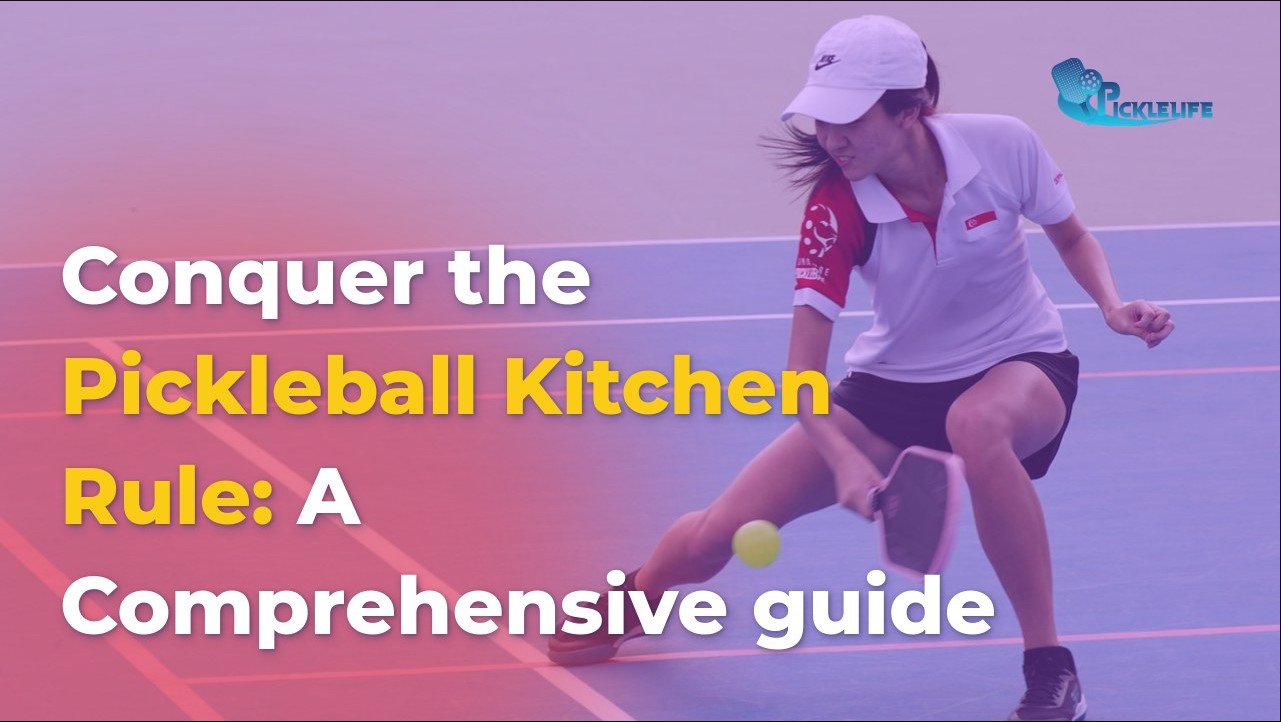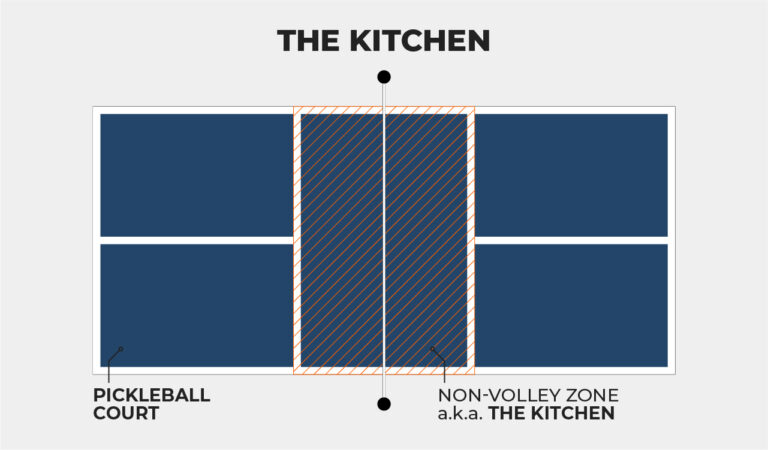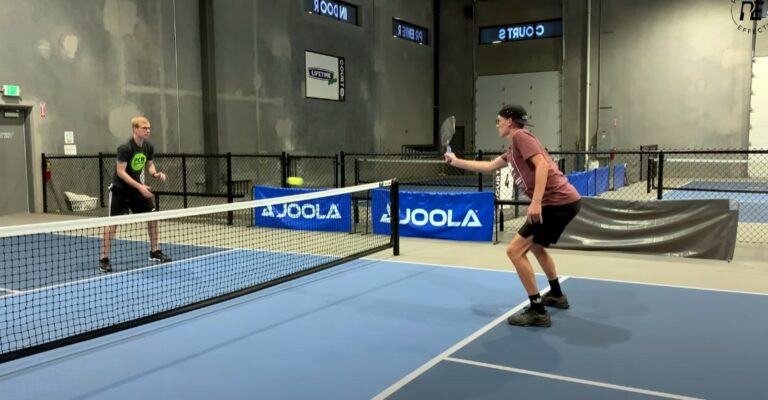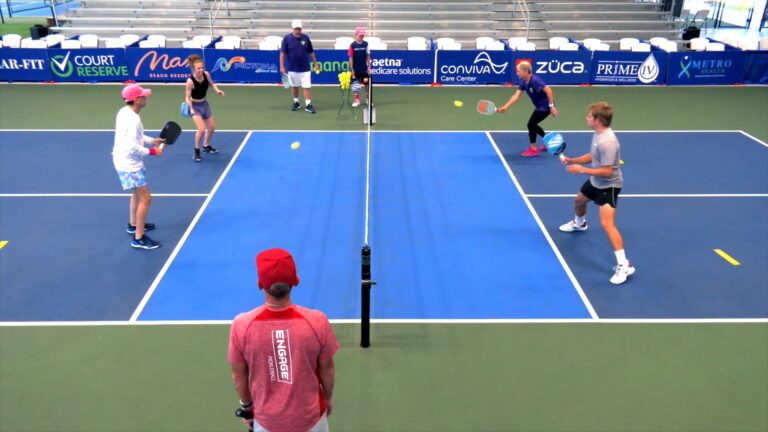Conquer the Pickleball Kitchen Rule: A Comprehensive guide
Pickleball has taken the sporting world by storm, blending the best elements of tennis, badminton, and table tennis into a thrilling game for all ages. At the heart of this game lies an essential rule that can make or break your performance: the pickleball kitchen rule, also known as the non-volley zone rule. Understanding this rule is crucial for any aspiring pickleball player, as it shapes gameplay strategies, encourages longer rallies, and ensures fair play. So, what exactly is the kitchen, and why should players respect its boundaries? Join us as we delve into the nuances of this fascinating aspect of pickleball, elevating your game and understanding of the sport.

What is the “kitchen” in pickleball?
Every sport has its unique terminology, and in pickleball, the area known as the kitchen can leave many newcomers perplexed. The kitchen, or non-volley zone (NVZ), may have an amusing name, but it serves a serious purpose in shaping the game. This 7-foot deep section extends from the net to the kitchen line on both sides of the court, creating a distinct area where certain actions are restricted.
Demystifying the name and location
So, where did the term “kitchen” originate? Many speculate that it draws inspiration from the game of shuffleboard, where a similar zone exists. In shuffleboard, players must play their shots carefully, just as pickleball players must navigate their movements within the kitchen. This whimsical connection highlights the sport’s roots while illustrating the significance of boundaries in gameplay.
The non-volley zone is marked by specific lines on the court, delineating areas where players must tread carefully. Here’s a visual representation:
| Area | Description |
|---|---|
| Kitchen/Non-Volley Zone | A 7-foot deep area on each side of the net. |
| Kitchen Line | The line marking the boundary of the kitchen. |
| Service Area | The area where serves must be executed. |
Understanding these boundaries is essential for any player serious about improving their skills and strategy in pickleball. The kitchen’s presence transforms the game, encouraging players to think tactically, rather than relying solely on raw power in their shots.
Why does the kitchen exist?
The kitchen rule isn’t just a quirky addition to the game’s regulations; it addresses the need for fairness and excitement in gameplay. By establishing specific guidelines for playing at the net, pickleball promotes a more enjoyable experience for players and spectators alike.

Fair play and longer rallies
One of the primary purposes of the kitchen lies in its ability to level the playing field. Taller or more skilled players often have advantages when they position themselves close to the net. By preventing volleying within this designated area, the non-volley zone replaces brute strength with strategic acumen. Players quick to capitalize on their skills are encouraged to hone their groundstrokes and dinks instead, leading to more engaging rallies.
As players adapt to this rule, it fosters a deeper understanding of the game. For example, players must decide when to approach the net, keeping in mind that a well-timed strategy can lead to a successful point while reckless play may result in an error. By embracing this challenge, players of all skill levels are rewarded with longer, more enjoyable matches.
The golden pickleball kitchen rule: non-volley zone
When playing pickleball, knowing the rules is just as important as mastering the techniques. The golden rule, when it comes to the kitchen, is simple: no volleying while standing in the kitchen. But what does this actually mean?
What is volleying?
In pickleball, a volley pertains to any shot made before the ball bounces on the court. This can include various types of shots, such as an overhead smash or a soft volley. Here’s a quick list of volley types:
| Type of Volley | Description |
|---|---|
| Overhead Volley | A shot made while the ball is above head level. |
| Soft Volley | A gentle shot near the net, requiring finesse. |
| Groundstroke | A powerful shot made after the ball bounces. |
Regardless of the speed or force of the shot, any hit made before the ball has contact with the ground is considered a volley and, thus, is subject to the rules governing the kitchen. The implications of this are clear: players must remain vigilant to avoid committing a fault.

Kitchen contact = fault
Committing a fault in pickleball has its consequences. If a player touches any part of the kitchen, including the lines, while volleying, it is considered a fault. This applies to any part of the player’s body, clothing, or equipment such as a paddle. Here are some common scenarios illustrating kitchen faults:
- A hat falls into the kitchen area while a player attempts a volley.
- A player inadvertently steps on the kitchen line while striking the ball.
In each case, the fault results in the loss of the point or serve. Understanding this nuance adds another layer of strategy to the game, encouraging players to become more mindful of their positioning.
The tricky part: understanding momentum
As players become familiar with the kitchen rule, they quickly realize that an often-overlooked aspect of the rule involves momentum. Understanding how momentum interacts with the non-volley zone is critical for avoiding faults.
Momentum and the kitchen
Momentum gained from a good volley can lead to some tricky situations. For instance, if a player makes a volley and then unwittingly carries momentum into the kitchen, they have broken a crucial rule. The kitchen doesn’t care if the ball is “dead” after they hit it; the player must ensure they don’t step into or touch the non-volley zone as they move.
Clear examples can demonstrate this point. Imagine a player executing a quick overhead smash and, due to the force of their shot, lunges forward into the kitchen. In doing so, they have committed a fault, regardless of their intentions. This rule prevents players from taking shortcuts to exploit the kitchen, ensuring the sport remains fair and competitive.
Re-establishing your position
To legally enter the kitchen after contacting a volley, players must reset their stance effectively. After hitting a volley, it’s essential to reestablish position with both feet completely outside the kitchen before attempting another shot.
To improve footwork and reset quickly, players can implement drills such as:
- Lateral movement drills: Practice moving sideways along the kitchen line, ensuring awareness of foot placement.
- Quick reentry drills: Hit a volley and practice jumping back to establish a legal positioning outside the kitchen.
These drills not only help enhance performance but also minimize the risk of kitchen-related faults.
What can you do in the kitchen?
Despite the restrictions around volleying, the kitchen is not a no-go zone. Players can make strategic plays if they approach with thoughtful intentions.
Groundstrokes, dinks, and lobs are your friends
Players are allowed in the kitchen, provided they respect the volleying rule. Hitting a groundstroke after the ball bounces is perfectly acceptable, and dinks and lobs can be especially effective from this position. Here are some great shots you can execute in the kitchen:
- Groundstrokes: Power shots made after the ball bounces.
- Dinks: Soft, angled shots that require finesse, often used to outmaneuver opponents.
- Lobs: High shots designed to push opponents back, creating opportunities for a follow-up play.
By taking advantage of these options, players can develop a versatile strategy that emphasizes shot placement and control rather than aggressive net play.

Don’t be a sitting duck
While the kitchen can be an advantageous space for strategic play, it can also become a trap if players linger too long. Spending too much time in the kitchen makes players vulnerable to opponents who are ready to volley from outside the non-volley zone.
To avoid becoming predictable, players should aim to make quick exits after hitting groundstrokes. Keeping mobility in mind is fundamental; those who understand when to capitalize on opportunities while maintaining an agile positioning will find increased success on the court.
Serving and the kitchen line
Serving in pickleball introduces further considerations regarding the kitchen rule. The kitchen line and its relevance serve as a critical dividing point that players must respect.
The kitchen line is out
When serving in pickleball, the ball should never touch the kitchen line or land in the kitchen itself. This rule significantly differs from other lines on the court, where touching the line often counts as “in.” It’s vital for players to be aware of this distinction in order to avoid faults.
Rule changes ahead?
With the growth of pickleball, there are ongoing discussions about potential changes to the kitchen line rule, particularly around serves. Players should stay informed regarding updates or modifications that may affect gameplay.
“Toeing the line”: advanced kitchen strategy
For those looking to take their pickleball skills to the next level, understanding advanced strategies regarding kitchen positioning becomes paramount.
The power of positioning
A common advanced strategy is known as “toeing the line,” where players position themselves just behind the kitchen line. Savvy players utilize this tactic to prepare for volleys up close or react quickly to short shots from their opponents.
This positioning allows for a strategic advantage, enabling twofold lateral movements and swift responses, maximizing opportunities to control shots and ultimately gain points.
Practice makes perfect
To refine kitchen positioning and awareness of the kitchen line, players should take part in specific drills. Practicing with partners or coaches not only bolsters skill but promotes teamwork and awareness of the game.
Consider developing drills that emphasize:
- Placement: Ensure that players can reliably position themselves just behind the kitchen line during practice matches.
- Footwork: Conduct focus drills for quick foot placement and improved motion when changing between zones on the court.
These practices foster better overall performance, resulting in higher confidence levels during competition.
Common mistakes and how to avoid them
Even the most experienced players can fall victim to the same common mistakes regarding the kitchen rule. Here’s a quick rundown of errors to avoid, enhancing personal gameplay.
Foot fault frenzy
One prevalent mistake involves stepping on the kitchen line during a volley. Being mindful of foot placement is crucial to avoiding this fault. Employing the following tips can help maintain awareness:
- Always check foot position before serving or volleying.
- Footwork drills should become a routine, helping develop control around the kitchen.
Momentum madness
Entering the kitchen due to momentum is another common error. Players should continually practice controlling their movements while volleying to avoid this pitfall. Techniques like:
- Practicing controlled shots that minimize forward movement.
- Drills focusing on the understanding and reset of the body after hitting the ball.
Having these tricks up your sleeve will enhance players’ adjudication of the court while reinforcing their understanding of kitchen regulations.
Misunderstanding the kitchen
Lastly, one widespread misconception involves the belief that players can never be in the kitchen. In reality, players are allowed to enter the kitchen, but they must do so with care. Reinforcing this understanding will shift perspectives on the kitchen from a zone of restriction to a space of opportunity.
Mastering the kitchen: key takeaways for beginners
In conclusion, mastering the kitchen rule is essential for any player aspiring to elevate their skills and enjoy the game of pickleball fully. By understanding the purpose of the non-volley zone, practicing legal actions within it, and learning strategic positioning, players can transform their approach to the sport.
Every player begins their journey as a novice; therefore, practice should be consistent, and mistakes should be seen as learning opportunities. Embracing mistakes and turning them into lessons will ultimately lead to more enjoyable and competitive matches.
To conquer the kitchen is to conquer an integral aspect of this exhilarating sport, and with this understanding, players can step confidently onto the court and thrive in their pickleball journey.
